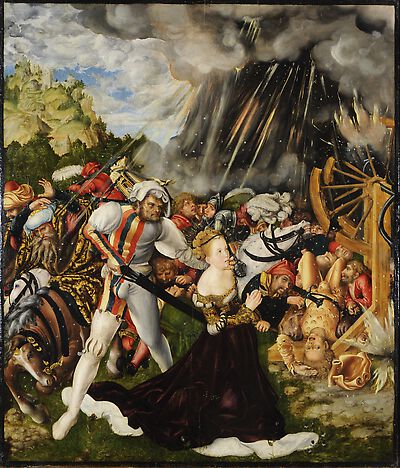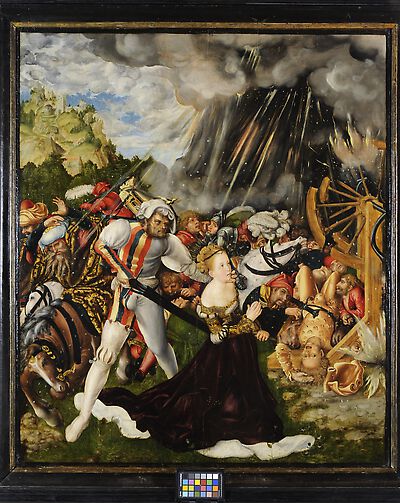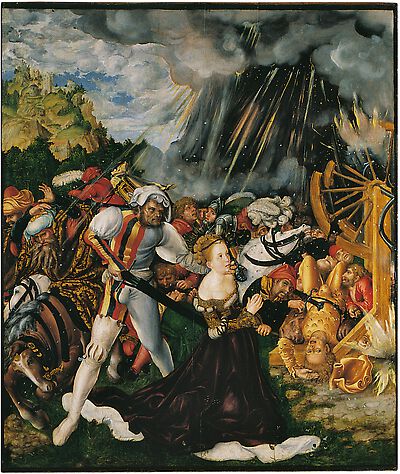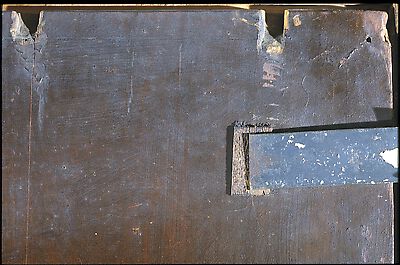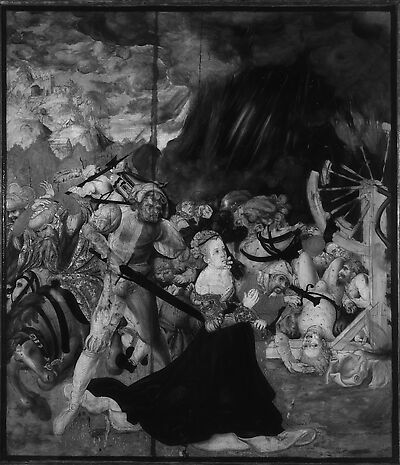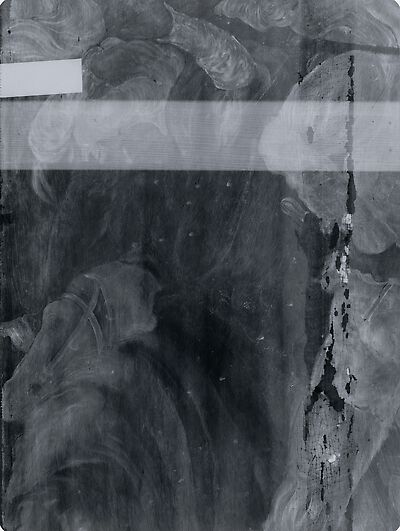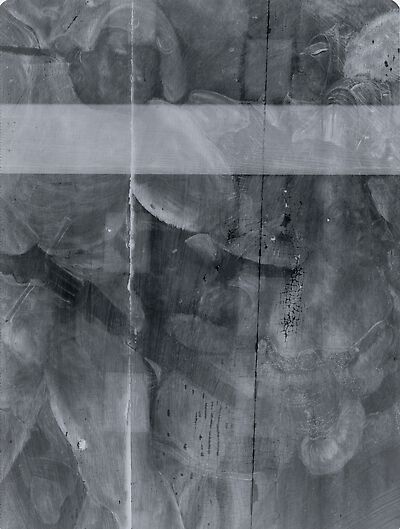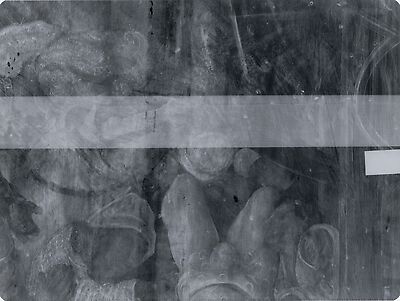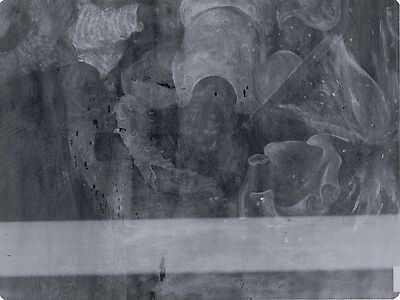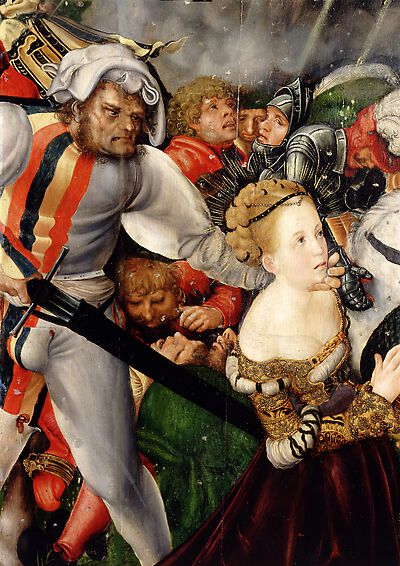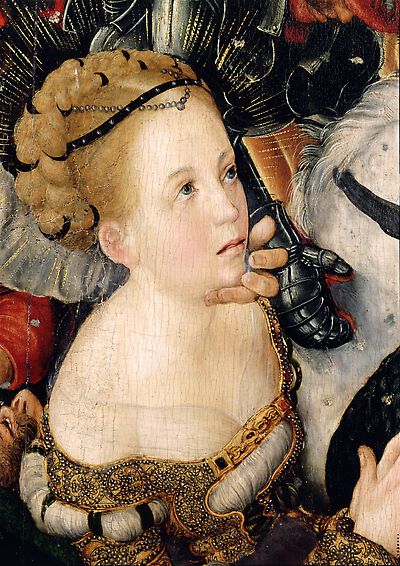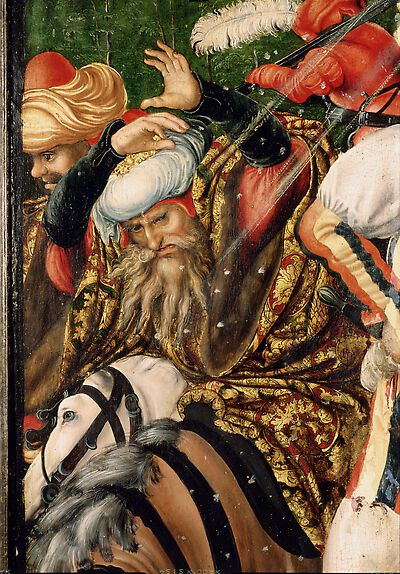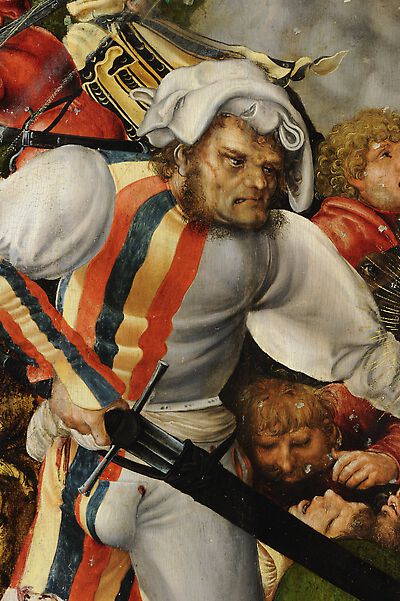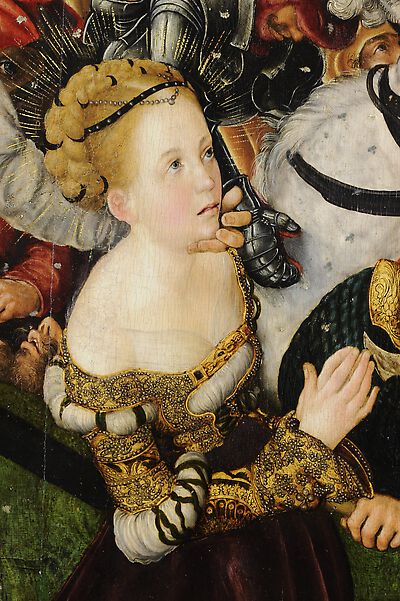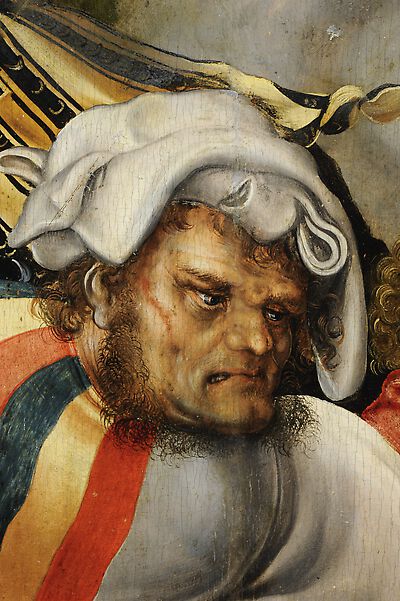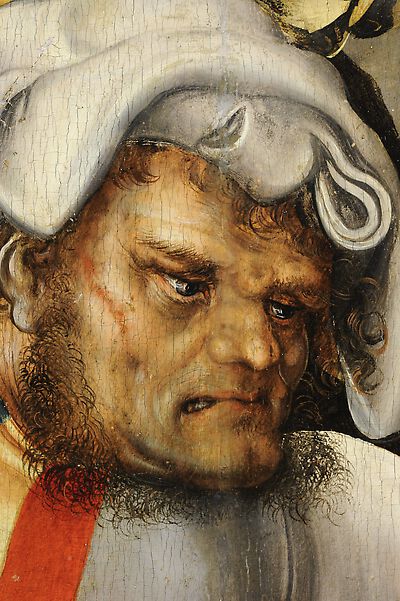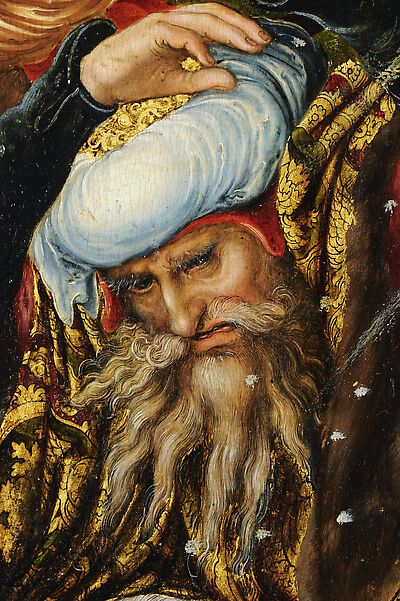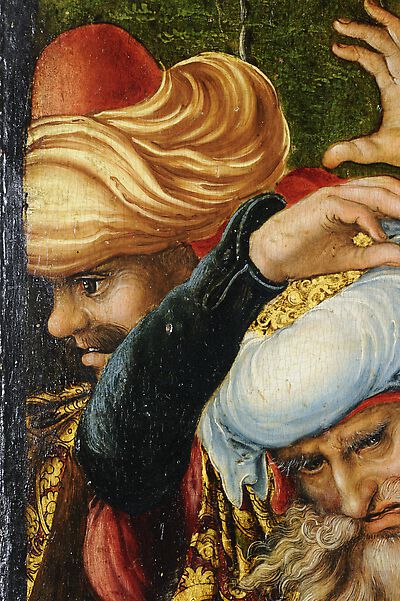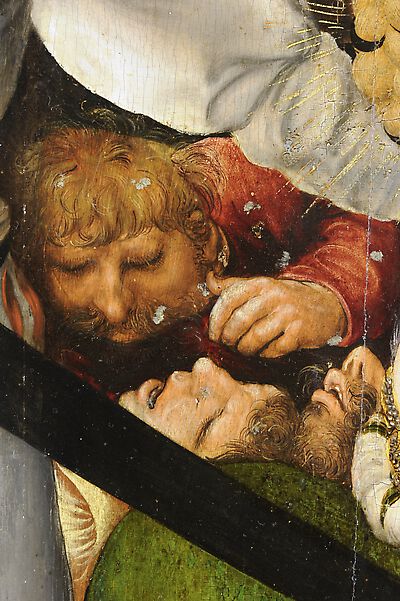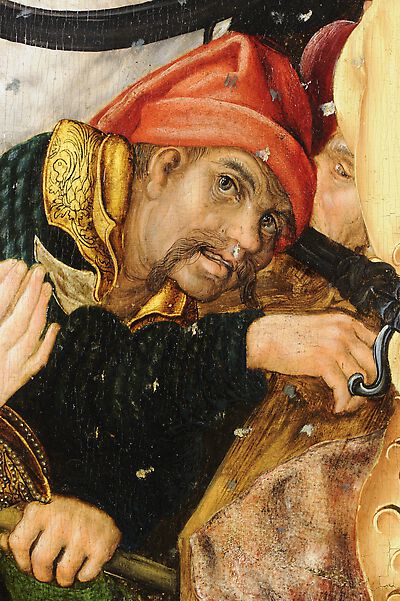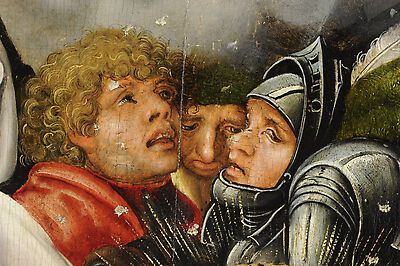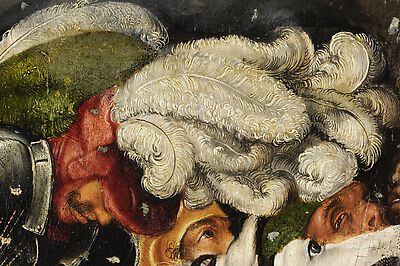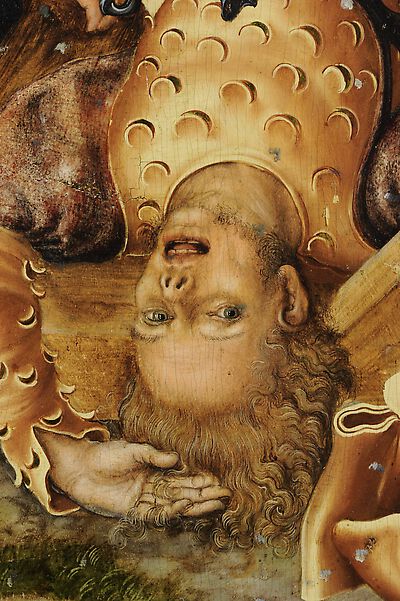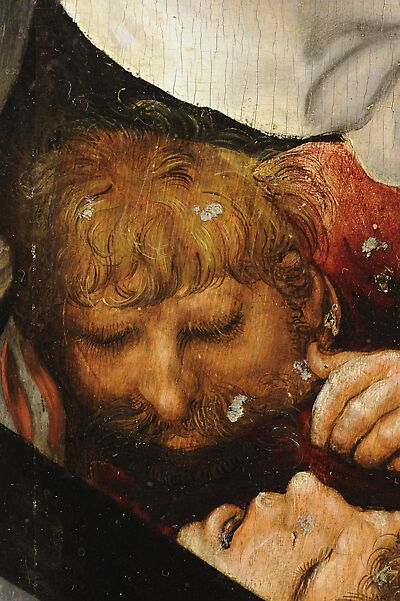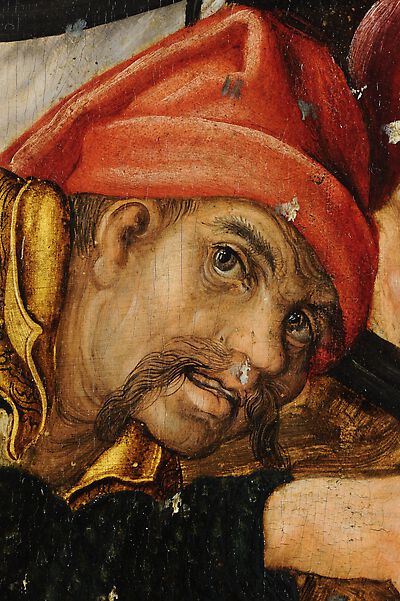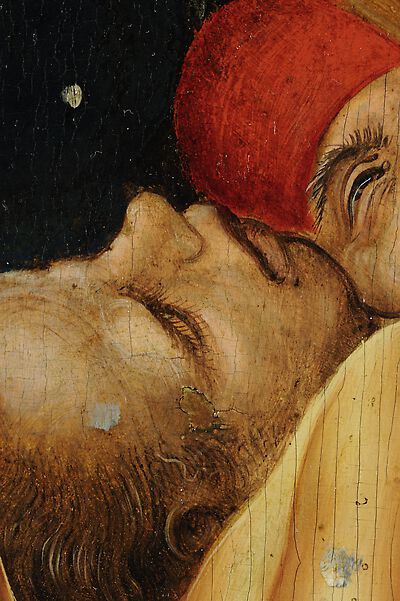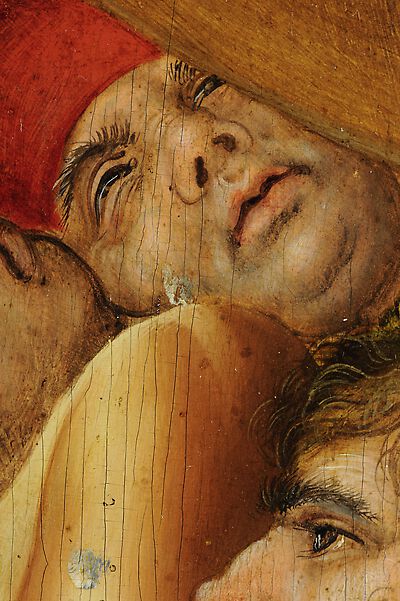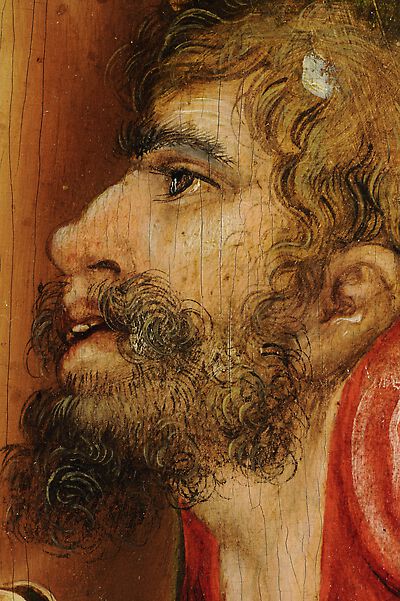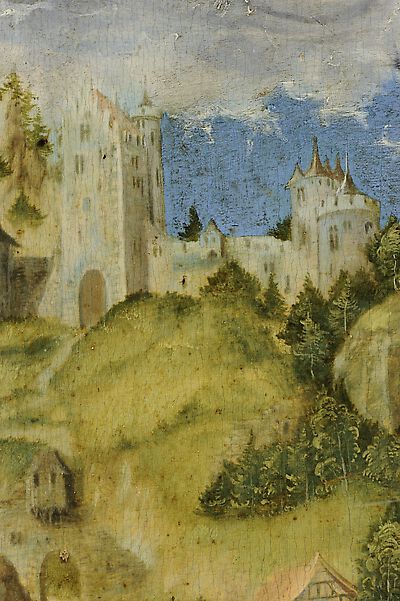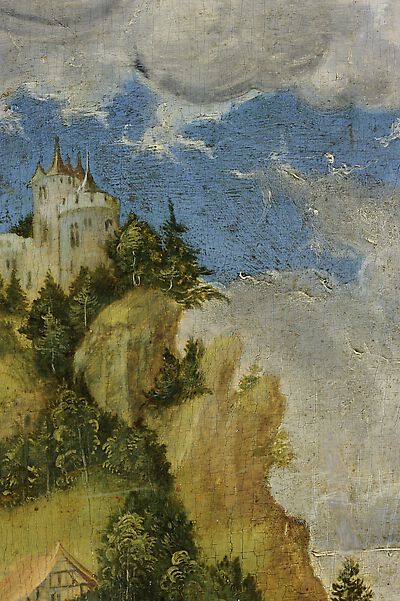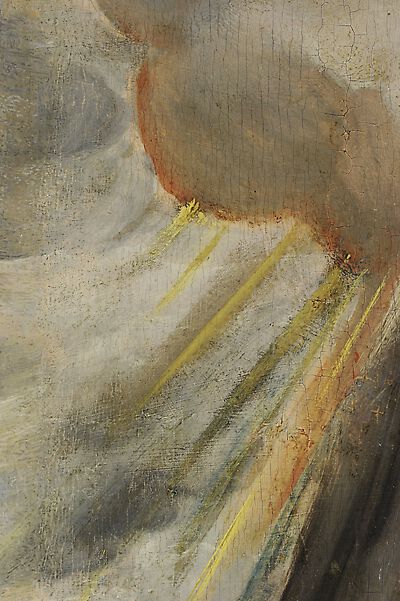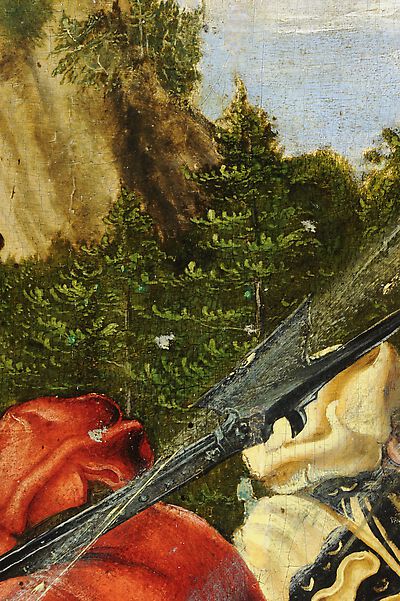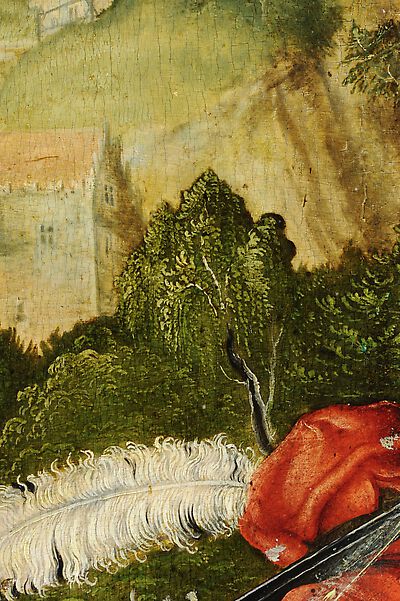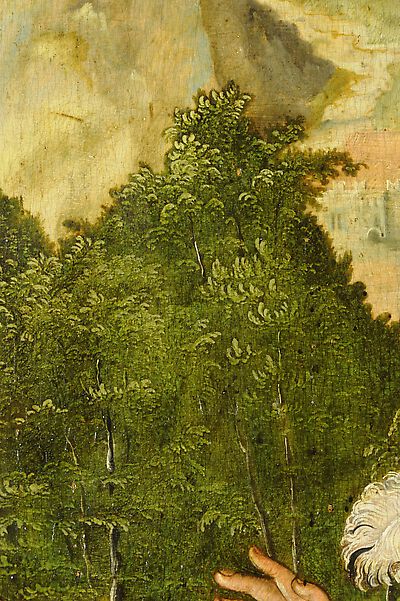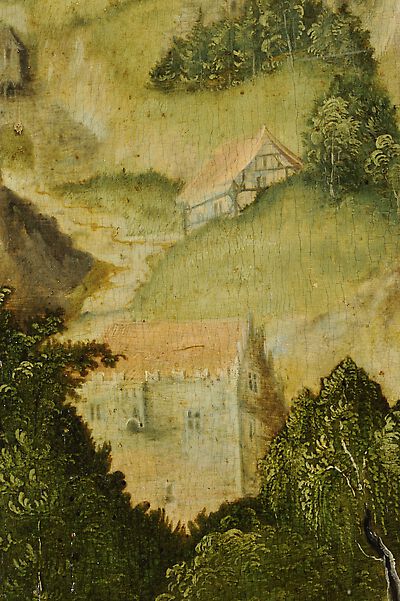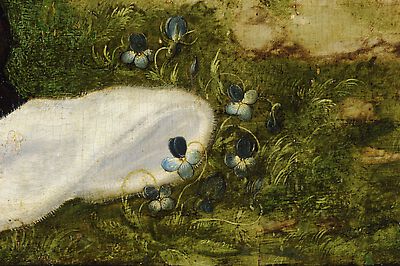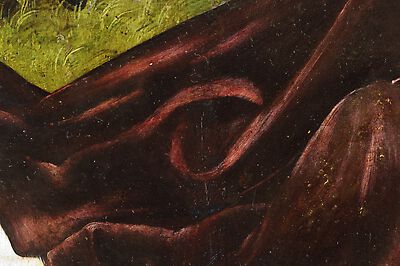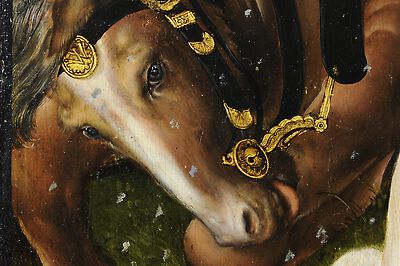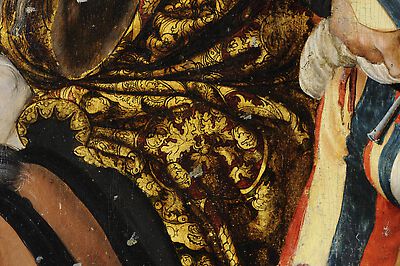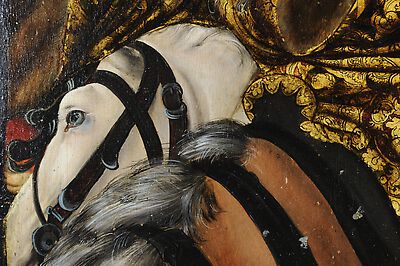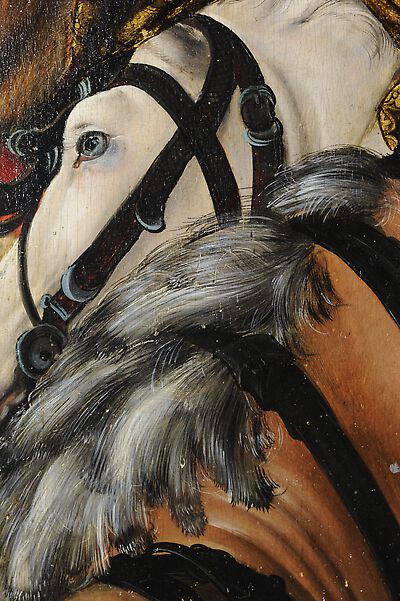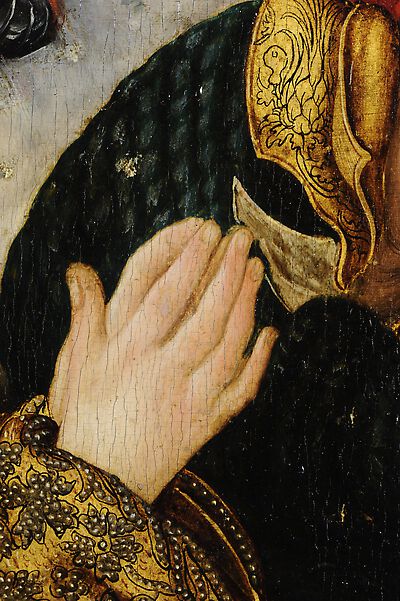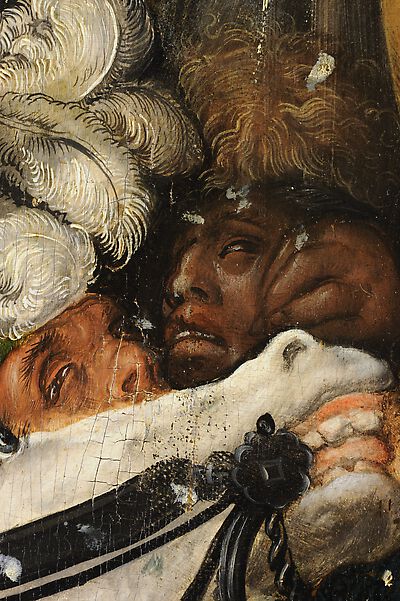Analyse of cross-sections; Incident light microscopy; UV fluorescence; EDX:
Probenliste Heydenreich [136]
Cross-section No.: EP 053
Brief description of paint: violet robe on black underpainting
Sample location: Fold in St Katharine’s robe, violett on black
Sample No.: 054
Incident light microscopy: yes
Incident light microscopy, photograph: yes
UV fluorescence: yes
UV fluorescence, photograph: yes
EDX: yes
EDX photograph: no
Observations:
5. varnish
4. red lake pigment and glassy, white amorphous lumps, in UV weak orange-red fluorescence
EDX: Pb!, Al!, traces of Ca, and K, indicating a red lake on a substrate containing aluminium
3. brown-black layer, large black and fine red pigment particles, in UV particles with a yellowish fluorescence are also visible, the red particles do not exhibit any characteristic fluorescence
EDX: red pigment Fe!, Si!, indicating a red iron oxide rich in silicon, the matrix also contains Ca, Cu, Ti – the black underpainting consists of black with the addition of iron oxide and a small amount of chalk? And a copper containing pigment (sicative)?
2. orange-pink layer, orange-red and white pigments, with a strong yellow fluorescence in UV and red pigments, with an orange fluorescence; light red imprimitura, which has run into an air-bubble in the chalk ground
1. traces of a black underdrawing; not detected with EDX
0. white ground
Commentary: The underdrawing is partially visible here. Pink imprimitura. Aubergine coloured robe with black underpainting (with the addition of red) and modulated with a red lake glaze
Probenliste Heydenreich [138]
Cross-section No.: EP 055
Brief description of paint: red piece of cloth on the trousers
Sample location: thief, thin strip of cloth beneath the hand on the left
Sample No.: 057
Incident light microscopy: yes
Incident light microscopy, photograph: yes
UV fluorescence: yes
UV fluorescence, photograph: yes
SEM/EDX: yes
SEM/EDX photograph: no
Observations:
3. red layer, vermillion pigment particles, blood red in UV, no further layer visible
2. white layer, light grey-white trousers,
EDX: Pb and traces of Ca, underpainting in lead white
1. orange-pink layer, white and orange-red pigments (orange-red in UV),
EDX: only Pb, imprimitura consists of lead white and red lead
0. white layer, becoming more transparent towards the top, ground
Commentary: Imprimatura (lead white and red lead) containing lead on a white ground. The trousers are underpainted with a light grey-white paint and are finished with vermilion red stripes.
[Heydenreich, unpublished examination report, 1994]
